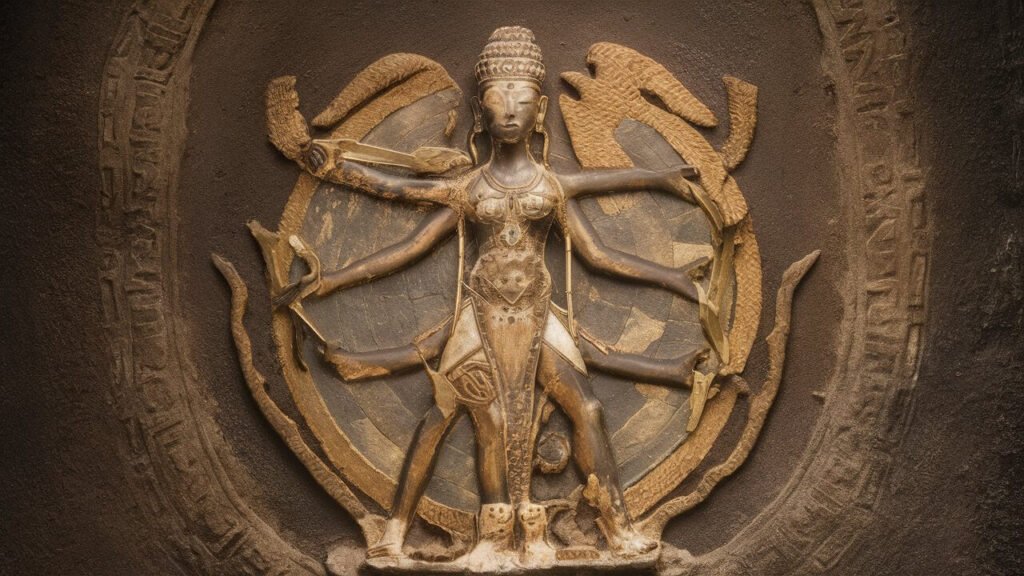When we think of ancient artz, what comes to mind? Is it the hauntingly beautiful Egyptian hieroglyphics etched on tomb walls, the powerful Greek sculptures depicting gods and heroes, or the vibrant stone age paintings that show early humans’ creative spark? Ancient art is not just about colors on a wall or shapes carved from stone; it’s a gateway to understanding how early civilizations expressed their culture, religion, and beliefs.
This article will dive deep into the world of ancient artz, looking at its origins, iconic pieces, and enduring influence on the world today.
We’ll explore everything from prehistoric paintings to classical sculptures, examining the symbolism, techniques, and materials used in ancient artworks. We’ll also understand how ancient art has shaped modern artistic movements like Renaissance art and continue to inspire contemporary artists. So, grab a cup of coffee and join me on this journey into the past, as we uncover the beauty and significance of ancient art.
Read Also: Gabriel Iglesias’ Wife? What He Keeps Private Will Surprise You
The Birth of Art: Prehistoric and Stone Age Art
The earliest known examples of human art date back tens of thousands of years to the Stone Age. These creations, made by early humans, reflect the beginnings of artistic expression.
Cave Paintings and Petroglyphs
In caves across Europe, Africa, and beyond, ancient humans used natural pigments to create stunning cave paintings that are still marvels today. The Lascaux cave paintings in France, for example, display animals painted on the walls over 17,000 years ago. These images offer insight into early human life, showing animals like bison and horses, which were essential to their survival.
Early art was all about survival and expression—using art to depict animals they hunted, or perhaps to communicate messages with those who followed them. The petroglyphs, or rock engravings, also tell a story of early human communication.
The Rise of Civilizations and More Advanced Art Forms
As civilizations began to grow around 3000 BCE, so did their art. The creation of monuments, sculpture, and paintings became a way to reflect the power, wealth, and beliefs of different cultures.
Ancient Egyptian Artz: Symbolism and Religious Themes
One of the most well-known examples of ancient artz comes from Egypt. Egyptian art is marked by strict rules regarding how figures and scenes should appear. Art was deeply intertwined with the culture’s religious beliefs and often symbolized the transition to the afterlife. The pyramids, tomb paintings, and statues of pharaohs and gods display intricate symbolism and geometric precision.
For instance, the famous Great Sphinx at Giza symbolizes the strength of the king and was believed to be a guardian figure. Egyptian hieroglyphics, a pictorial form of writing, also helped record their understanding of the afterlife and divine beings.
Ancient Greek Artz: The Celebration of the Human Form
Greek art stands out for its focus on human perfection. From pottery to sculpture, the ancient Greeks idealized the human body. Greek sculptures, like The Discus Thrower or David, embody the perfect balance of body and mind, blending form and movement with a harmony previously unknown.
The Parthenon sculptures are considered masterpieces, telling stories from Greek mythology and religious beliefs. Artists like Phidias were revered for their ability to create life-like representations, which helped lay the groundwork for future art forms.
Ancient Roman Artz: Fusion and Realism
Roman art took the best elements from Greek influence but also sought to represent realism. Unlike Greek art, which was often idealized, Roman artists loved depicting everyday life. Busts of emperors, mosaics, and wall paintings displayed the realities of Roman culture, from public events to daily life.
The use of frescoes to decorate public buildings, homes, and tombs created beautiful scenes, often reflecting Roman mythology, culture, and political power. These artworks provided social and political commentary through their intricate design.
Techniques and Materials Used in Ancient Art
Ancient artists used a variety of materials and techniques that may surprise you. Their creativity wasn’t just in their subject matter, but in the way they manipulated the materials at their disposal.
Techniques in Sculpture and Architecture
From colossal Greek marble statues to finely detailed Roman busts, ancient artists spent years mastering the techniques required to carve from stone or marble. Sculpting often involved chisels, hammers, and tools fashioned from bronze or iron.
Painting and Mosaics
The Egyptians used fresco painting and temple walls as their canvases. Pigments were derived from natural materials like charcoal, ochre, and minerals, providing vibrant color that withstood time. Roman mosaics—made from tiny glass or stone pieces—decorated floors and walls, often bringing mythological or historical scenes to life.
Materials Used: Stone, Clay, and More
Ancient artists had limited materials, but they made use of everything they could find. Clay was used for pottery, which often told stories, just as ancient paintings and sculptures did. Stone, such as limestone and marble, was often carved into statues or monuments that still exist today.
Preserving Ancient Art: Challenges and Methods
Modern technology helps us preserve these works, but the task isn’t easy. From fading frescoes to crumbling marble, the passing centuries have taken their toll. Today, much of the world’s ancient artz is protected by museums, galleries, and even digital archives, allowing future generations to study and admire them.
The Symbolism and Meaning Behind Ancient Artz
Ancient artz often had deep ties to religion. Whether it was to honor the gods, serve as a visual record of deities, or assist in guiding the soul to the afterlife, art was never created solely for beauty. It was functional and spiritual. For instance, many of the Egyptian paintings on tomb walls were created to ensure that the deceased would have everything they needed for the afterlife.
Cultural and Social Significance
Art also reflected the social structure of ancient cultures. For instance, in Roman art, you could immediately tell the status of a person based on their portrait bust—emperors were depicted as mature and wise, while common citizens appeared with less detail.
The use of art for political propaganda wasn’t just limited to modern times; Roman and Greek artists were highly involved in visualizing the ideologies of the state, creating sculptures and statues of leaders like Julius Caesar and Alexander the Great, symbolizing power and legitimacy.
The Legacy and Influence of Ancient Art
Ancient art hasn’t just influenced modern art movements; it’s deeply embedded in modern aesthetics and architecture today. From Neoclassical sculptures to the reconstruction of ancient monuments, the desire to revive classical art forms in later periods shows that ancient works continue to shape how we view beauty and culture.
Modern Artists Drawing from Ancient Influence
Contemporary artists often find inspiration in ancient art through methods and subjects. Artists who seek to blend classical and modern techniques use ancient themes of humanism, mythology, and religion to make powerful statements.
Renaissance artists, like Michelangelo, studied ancient sculptures extensively, and their work was deeply influenced by ancient Greek and Roman art.
FAQs:
What is the most famous form of ancient artz?
The ancient Greek sculptures, especially those from the Classical period, are perhaps the most famous and influential artworks of the ancient world.
Why is ancient artz important?
Ancient art helps us understand the beliefs, customs, and daily lives of past civilizations, offering insights into history, culture, and technological advancements.
What materials did ancient artists use?
Ancient artists used a variety of materials, including stone, clay, wood, and bronze. They also used natural pigments for painting and decorating.
Conclusion:
In conclusion, ancient artz is more than just beautiful creations. It’s a vital historical document, giving us a glimpse into the civilizations that shaped the world as we know it. By studying ancient art, we are not just admiring its beauty; we are learning about the lives, cultures, and ideas that influenced the world for centuries.
Ancient artifacts like sculptures, murals, pottery, and paintings may appear to be relics of the past, but they’re living history, still inspiring artists and influencing the present. So, whether you’re interested in the spiritual significance of Egyptian tomb paintings, the perfect forms of Greek sculptures, or the boldness of Roman mosaics, know this: ancient artz continues to enrich our understanding of the past and shapes the present day.



